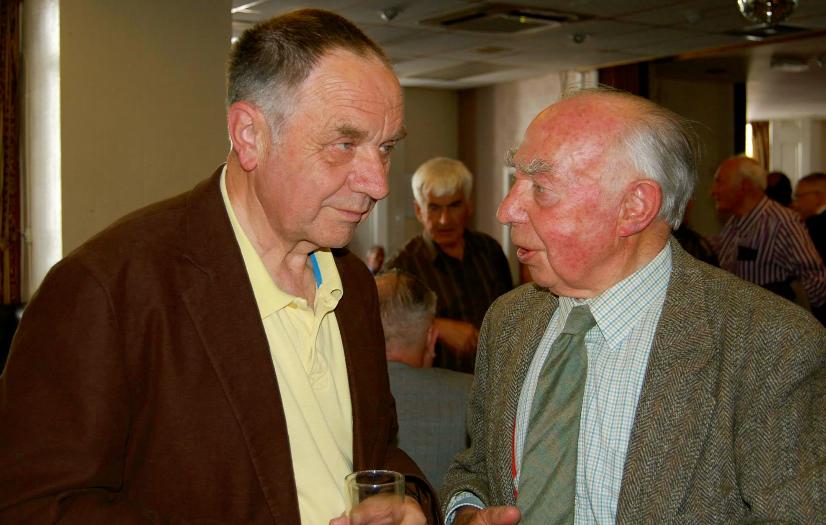
Motorman’s Memoirs
Motorman George Hards
By Ivan Wilson

GRAHAM PENN COLLECTION
BRIGHTON DRIVERS
CHRIS NEWTON & GEORGE HARDS
George Hards started his footplate career at Brighton Steam Shed on September 11th 1944.
George gained his promotion to a Motorman at West Worthing Depot in July 1961. West Worthing had an establishment of 20 Motormen and their route knowledge comprised Portsmouth Harbour on the West coast Ore on the East Coast also London Bridge and London Victoria.
The units worked by West Worthing Motormen comprised 2BILs, 2HALs, 4CORs, 4BUFs, 4LAVs 6PULs and 6PANs
The majority of work was on the West Coast between Brighton and Portsmouth Harbour also Littlehampton and Bognor Regis with 2BILs and 2HALs also 6PULs and 6PANs on the London services.
George registered a move to Brighton Motorman’s Depot and transferred back to Brighton in May 1962.
Brighton Motorman’s Depot was much bigger with 80 Motormen there work was basically the same as West Worthing but with more work to London Victoria and London Bridge working on 4LAVs also including the non stop Brighton Belle worked with 5 BELs.
He recalled when working on these units fitted with only the Westinghouse Brake it required great skill as the brake could only be applied once without then releasing and then recharging the main reservoir tank. If you were working stopping services on the East and West Coast with 2BILs and 2HALs you had to be very careful as the platforms were short, if you did misjudge the brake slightly you had 2 choices you could open the power controller and drag the units to the correct stopping point without releasing the brake or do what was called a quick release which meant releasing the brake handle and then reapplying very quickly which released the brakes on only part of the train and then reapplying at the correct point.
Brighton Motormen worked a service from Brighton to Victoria formed of 6x 2BILs this had to be worked with the greatest of care as the Westinghouse brake on 6 units could well apply and release at different times. When the Motorman applied the brake handle the brakes would apply from the front of the train first then move down the train, if he then released the brake it would also come off from the front of the train first. If he then reapplied it before the brake had come off on the whole of the train part of the train would have the brake on part would have the brake off and then the front would have the brake back on again this could cause a snatch which could well cause the coupling between units to break although George does not recall this happening.
George recalled how he liked to work on the 6PULs and 6PANs as they were heavy units and rode very well especially as they were used on the fast services to London, Eastbourne, Ore and Littlehampton.
Until 1964 the services from London Victoria and London Bridge to Bognor Regis via the Mid Sussex Line were worked by 4BUFs and 4CORs Brighton and West Worthing Motormen had some work on these units but George recalled that he did not like working on these as they were very uncomfortable and did not ride very well at high speed.
The non stop Brighton Belle was timed for 58 minutes non stop between Brighton and London Victoria and vice versa. There were many complaints from passengers that the 5BELs did not ride well at speed George recalled that the reason for this was that if you applied the brake the units would start to sway. He says the run could be made in 52 minutes and the trick was not to apply the brake on these fast services if at all until reaching the terminus but to coast as much as possible.
As time went by the old units were replaced by 2HAPs, 4CIGs and 4BIGs and the last of the units fitted with the Westinghouse Brake the 2BILs, 2HALs and 4CORs were withdrawn in 1972
The new units were far more comfortable to work on also the brake did not require the same level of skill as you could release and reapply the new Electric Pneumatic (E.P.) brake as required.